 W
WThe military history of Catalonia began in the thirteenth century, with the first exploits of the armies under the orders of Catalan rulers and lasting until today, where Catalan soldiers are integrated into international forces.
 W
WThe Aragonese Crusade or Crusade of Aragon, a part of the larger War of the Sicilian Vespers, was declared by Pope Martin IV against King Peter III of Aragon in 1284 and 1285. Because of the recent conquest of Sicily by Peter, Martin declared a crusade against him and officially deposed him as king, on the grounds that Aragon was a papal fief: Peter's grandfather and namesake, Peter II, had surrendered the kingdom as a fief to the Holy See. Martin bestowed Aragon on Peter's nephew Count Charles of Valois, son of King Philip III of France.
The Army of the Principality of Catalonia was the army raised by the General Estates of Catalonia on July 9, 1713 after the English treason with the Treaty of Utrecht and the withdrawal of Imperial troops by the L'Hospitalet Agreement. The army was made up of 10,000 infantry, 1,600 cavalry and 1,000 naval troops. It is not known how many men formed the artillery unit but it did not exceed 700. In total, the army contained 13,000 regular troops.
 W
WAwake iron! was a battle cry of the Middle Ages employed by the Almogavars. It was shouted on entering the fight, to frighten the enemy and invoke the presence of iron in the battle.
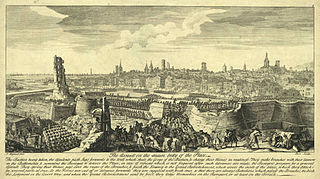 W
WThe Siege of Barcelona was a battle at the end of the War of Spanish Succession, which pitted Archduke Charles of Austria against Philip V of Spain, backed by France in a contest for the Spanish crown.
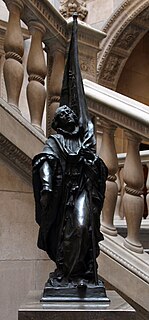 W
WRafael Casanova i Comes was a Spanish jurist, Spanish patriot as supporter of Charles VI, Holy Roman Emperor as a claimant to the Crown of Spain during the War of the Spanish succession. He became mayor of Barcelona and commander in chief of Catalonia during the Siege of Barcelona until he was wounded in combat while commanding La Coronela during the counterattack on the Saint Peter front on the last day of the siege, September 11, 1714. After the war he received a royal pardon for having supported the Habsburg claim to the Spanish throne. He recovered from his wounds, and continued his fight against absolute monarchy as a lawyer. It has been claimed that he is the author of the book Record de l'Aliança fet el Sereníssim Jordi Augusto Rey de la Gran Bretanya in which Catalonia reminds England of the Treaty of Genoa and their obligation to Catalonia.
 W
WThe Catalan Civil War, also called the Catalonian Civil War or the War against John II, was a civil war in the Principality of Catalonia, then belonging to the Crown of Aragon, between 1462 and 1472. The two factions, the royalists who supported John II of Aragon and the Catalan constitutionalists, disputed the extent of royal rights in Catalonia. The French entered the war at times on the side on John II and at times with the Catalans. The Catalans, who at first rallied around John's son Charles of Viana, set up several pretenders in opposition to John during the course of the conflict. Barcelona remained their stronghold to the end: with its surrender the war came to a close. John, victorious, re-established the status quo ante.
 W
WThe 1412 Compromise of Caspe was an act and resolution of parliamentary representatives of the constituent realms of the Crown of Aragon, meeting in Caspe, to resolve the interregnum following the death of King Martin of Aragon in 1410 without a legitimate heir.
 W
WBernard Desclot was a Catalan chronicler whose work covering the brief reign of Peter III of Aragon (1276–85) forms one of the four Catalan Grand Chronicles through which the modern historian views thirteenth- and fourteenth century military and political matters in the Kingdom of Aragon and the Principality of Catalonia, including the "Aragonese Crusade". Desclot's Chronicle begins in the eleventh century but gains especial interest when he comes to describe events current within living memory. Bernard's literary model was Romance, and his account is spiced with dramatic monologues of the central characters and thrilling episodes, such as the escape of Peter's brother, James II of Majorca, from the fortress of Perpignan, through the castle's drains.
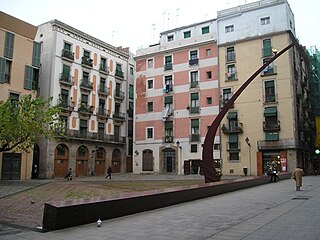 W
WThe Fossar de les Moreres is a memorial square in Barcelona, adjacent to the basilica of Santa Maria del Mar. The plaza was built over a cemetery where defenders of the city were buried following the Siege of Barcelona at the end of the War of the Spanish Succession in 1714. The plaza retains its everyday use as a public space, but also prominently features a memorial to the fallen Catalans of the war, with a torch of eternal flame and a heroic poem by Frederic Soler, "El Fossar de les Moreres".
 W
WThe Labora Fontbernat M-1938 was a Submachine gun of Catalan origin and was used by the Spanish Republican Army during the Spanish Civil War. It was made from machined steel and chambered in the 9x23mm Largo round.
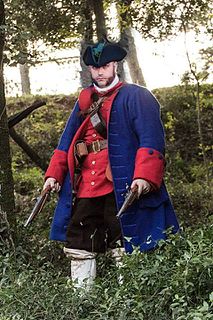 W
WMiquelets or Micalets were irregular Catalan and Valencian mountain light troops. They enjoyed a certain prominence in the wars in the Iberian Peninsula during the 17th and 18th centuries, and in peace seem to have on occasion plundered travellers.
 W
WJosep Moragues i Mas was a Catalan general during the War of the Spanish Succession. He fought on the Archduke Charles' side.
 W
WThe Battle of Muret, fought on 12 September 1213 near Muret, 25 km south of Toulouse, was the last major battle of the Albigensian Crusade and one of the most notable pitched battles of the Middle Ages. Although estimates vary considerably, even among distinguished modern historians, it is famed for having pitted a measly force of French knights and crusaders commanded by Simon de Montfort the Elder against a vastly superior allied army led by King Peter II of Aragon and Count Raymond VI of Toulouse.
 W
WThe Reapers' War, also known as the Catalan Revolt was a conflict that affected a large part of the Principality of Catalonia between the years of 1640 and 1659. It had an enduring effect in the Treaty of the Pyrenees (1659), which ceded the County of Roussillon and the northern half of the County of Cerdanya to France, splitting these northern Catalan territories off from the Principality of Catalonia and the Crown of Aragon, and thereby receding the borders of Spain to the Pyrenees.
 W
WThe Revolt of the Barretines also known as the Revolt of the Gorretes, was a Catalan rebellion fought against the government of King Charles II of Spain. The most salient complaint was against the government's quartering of soldiers. Other issues of contention were tax protests and Catalan nationalistic tensions. The revolt was funded and intensified by agents of France as part of the War of the Grand Alliance. Civil disorder lasted from 1687 to 1689.
 W
WRoger of Lauria was an Italian admiral in Aragonese service, who was the commander of the fleet of the Crown of Aragon during the War of the Sicilian Vespers. He was probably the most successful and talented naval tactician of the medieval period. He is known as Ruggero or Ruggiero di Lauria in Italian and Roger de Llúria in Catalan.
 W
WThe Sentencia Arbitral de Guadalupe was a legal decree delivered by King Ferdinand II of Aragon at the Monastery of Santa María de Guadalupe in Extremadura, Spain on 21 April 1486 to free the Catalan remensa peasants who were subjects of the lord of the manor and tied to his lands and subject to numerous onerous fees and maltreatment under the so-called evil customs.
 W
WSerra de Cavalls is a mountain chain located at the southern end of the Catalan Pre-Coastal Range, Catalonia, Spain. The ridge's highest point is Punta Redona. This mountain range lies within the Benissanet, Gandesa and El Pinell de Brai municipal term. On the northern side are two ridges of parallel foothills called Serra del Pebre and Serra de Santa Madrona. Its northern prolongation is known as Serra de la Vall de la Torre.
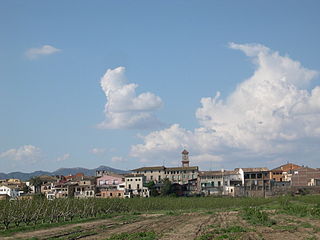 W
WSerra de la Vall de la Torre, also known as Serra de la Vall, is a mountain range located at the southern end of the Catalan Pre-Coastal Range, Catalonia, Spain. The ridge's highest point is 450.8 m. This mountain range lies within the Benissanet and Corbera d'Ebre municipal term. It is a smaller and lower northern prolongation of the Serra de Cavalls.
 W
WSerra de Pàndols is a limestone mountain chain located at the southern end of the Catalan Pre-Coastal Range, in Catalonia, Spain.
 W
WThe Sicilian Vespers was a successful rebellion on the island of Sicily that broke out at Easter 1282 against the rule of the French-born king Charles I, who had ruled the Kingdom of Sicily since 1266. Within six weeks, approximately 13,000 French men and women were slain by the rebels, and the government of Charles lost control of the island. This began the War of the Sicilian Vespers.
 W
WThe Battle of the Col de Panissars was fought on 30 September and 1 October 1285 between the forces of Philip III of France and Peter III of Aragon. It was a severe defeat for the French, who were already retiring over the Pyrenees when the Aragonese fell on them.
 W
WThe Treaty of the Pyrenees,, was signed on 7 November 1659, and ended the 1635 to 1659 Franco-Spanish war.
 W
WAntonio de Villarroel y Pelaez was a Spanish military commander in the service of Philip V until 1710 in the War of the Spanish Succession. After the disgrace of the Duke of Orléans, he switched to the Habsburg cause of Charles VI, keeping his rank. In 1713 he was appointed general commander of the Army of Catalonia.
 W
WThe War of the Sicilian Vespers or just War of the Vespers was a conflict that started with the insurrection of the Sicilian Vespers against Charles of Anjou in 1282 and ended in 1302 with the Peace of Caltabellotta. It was fought in Sicily, Catalonia and elsewhere in the western Mediterranean between the kings of Aragon on one side against the Angevin Charles of Anjou, his son Charles II, the kings of France, and the Papacy on the other side. The war resulted in the division of the old Kingdom of Sicily; at Caltabellotta, Charles II was confirmed as king of Sicily's peninsular territories, while Frederick III was confirmed as king of the island territories.